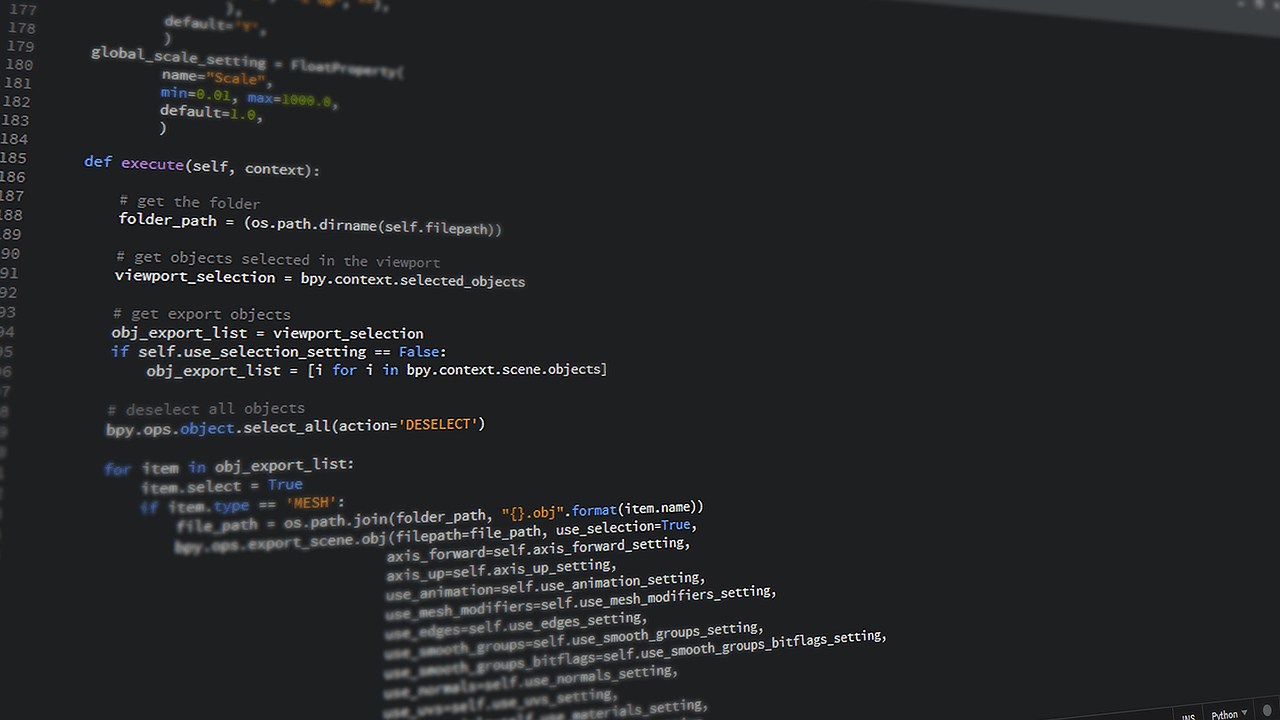Why We Use Python in Data Science
Introduction | Python in Data Science
In the realm of data science, Python has emerged as one of the most powerful and versatile programming languages. Its popularity in the data science community can be attributed to its ease of use, extensive libraries, and robust capabilities. In this article, we will delve into the reasons why Python is widely preferred and extensively used in data science projects.
Table of Contents 1. The Versatility of Python 2. Vast Collection of Libraries 3. Data Handling and Analysis 4. Machine Learning and AI 5. Visualization Capabilities 6. Community Support 7. Integration and Deployment 8. Scalability 9. Python's Simplicity 10. Speed and Performance 11. Interoperability 12. Open Source Advantage 13. Career Opportunities 14. Future Outlook 15. Conclusion
The Versatility of Python | Python in Data Science
Python’s versatility is a key factor behind its prevalence in data science. Unlike other programming languages, Python allows data scientists to work on a wide range of tasks seamlessly. Whether it’s data analysis, machine learning, artificial intelligence, or web scraping, Python offers the necessary tools and modules to accomplish diverse objectives.
Vast Collection of Libraries | Python in Data Science
Python boasts an extensive collection of libraries tailored explicitly for data science. Libraries such as NumPy, Pandas, and SciPy empower data scientists to handle complex mathematical operations, data manipulation, and statistical analysis with ease. Additionally, sci-kit-learn and TensorFlow facilitate the efficient implementation of machine learning algorithms.
Data Handling and Analysis | Python in Data Science
Data manipulation and analysis are at the heart of data science. Python’s Pandas library provides data structures like DataFrames that enable data scientists to clean, filter, and transform data efficiently. This capability simplifies the handling of large datasets, allowing for seamless data exploration and preparation.
Machine Learning and AI | Python in Data Science
Python has become synonymous with machine learning and artificial intelligence. The simplicity and expressiveness of Python code make it a preferred choice for building and deploying machine learning models. Data scientists can experiment with a wide range of algorithms and frameworks effortlessly.
Visualization Capabilities | Python in Data Science
Visualizing data is crucial for drawing insights and communicating findings effectively. Python’s Matplotlib and Seaborn libraries enable data scientists to create stunning visualizations, from basic charts to complex interactive plots, enhancing the understanding of data patterns and trends.
Community Support | Python in Data Science
The thriving Python community plays a significant role in its prominence in data science. A vast number of online forums, communities, and Q&A platforms provide immense support to data scientists, aiding in problem-solving and knowledge sharing.
Integration and Deployment | Python in Data Science
Python’s compatibility with other programming languages simplifies integration with existing systems. Moreover, Python offers seamless deployment options, enabling data scientists to transition their models from development to production environments efficiently.
Scalability
In the context of data science, scalability is crucial, especially when dealing with large datasets and complex algorithms. Python, with its robust backend support and optimization techniques, ensures that data science projects can scale effortlessly.
Python’s Simplicity
The simplicity of Python code enables data scientists to focus on problem-solving rather than wrestling with complex syntax. Its clear and readable code makes it easier for team collaboration, leading to increased productivity in data science projects.
Speed and Performance
Python may not be the fastest language, but its performance is significantly improved through libraries like NumPy, which allow data scientists to perform vectorized operations, leading to faster execution of code.
Interoperability
Python’s ability to interact seamlessly with other languages and technologies makes it an ideal choice for data science projects that require integrating with different tools and systems.
Open Source Advantage
Being an open-source language, Python is constantly evolving through contributions from the community. This open development model ensures that data scientists have access to cutting-edge tools and frameworks.
Career Opportunities
The widespread adoption of Python in data science has resulted in an increased demand for skilled Python developers and data scientists. Embracing Python can open up exciting career opportunities in various industries and research fields.
Future Outlook
Python’s trajectory in data science seems promising, with continuous advancements and innovations in the ecosystem. As the data science landscape evolves, Python is likely to maintain its position as a leading language for data-driven projects.
Conclusion | Python in Data Science
In conclusion, Python’s exceptional versatility, extensive libraries, and straightforward syntax make it an indispensable tool for data scientists worldwide. Its capability to handle data, build machine learning models, and generate insightful visualizations has solidified its position as the go-to language in the data science domain.
FAQs
1. Is Python the best language for data science?
Python is one of the best languages for data science due to its simplicity, extensive libraries, and large community support. While there are other options, Python’s capabilities make it a popular choice.
2. Which Python library is most commonly used in data science?
The Pandas Library is one of the most commonly used libraries in data science. It provides powerful data manipulation tools and is highly efficient for data analysis tasks.
3. Can I build machine learning models using Python?
Absolutely! Python offers various libraries such as sci-kit-learn and TensorFlow, which allow you to build and deploy machine learning models effectively.
4. How can Python enhance data visualization?
Python’s Matplotlib and Seaborn libraries provide rich visualization capabilities, allowing you to create a wide range of charts and plots to effectively communicate data insights.
5. Is Python suitable for big data projects?
Yes, Python can handle big data projects, especially when combined with libraries like Dask or PySpark. These libraries enhance Python’s scalability and performance for big data processing.


2 thoughts on “Why We Use Python in Data Science | 2023”